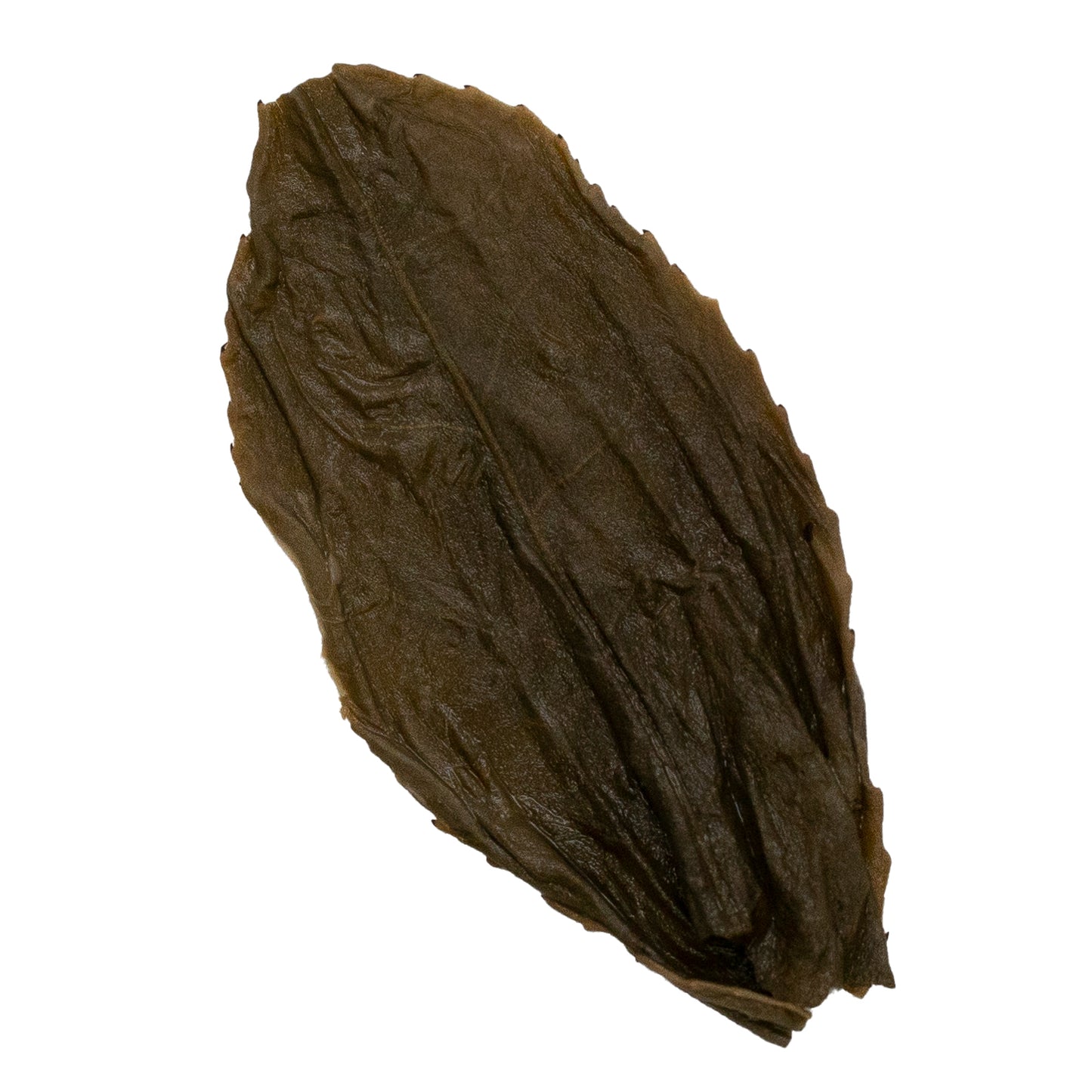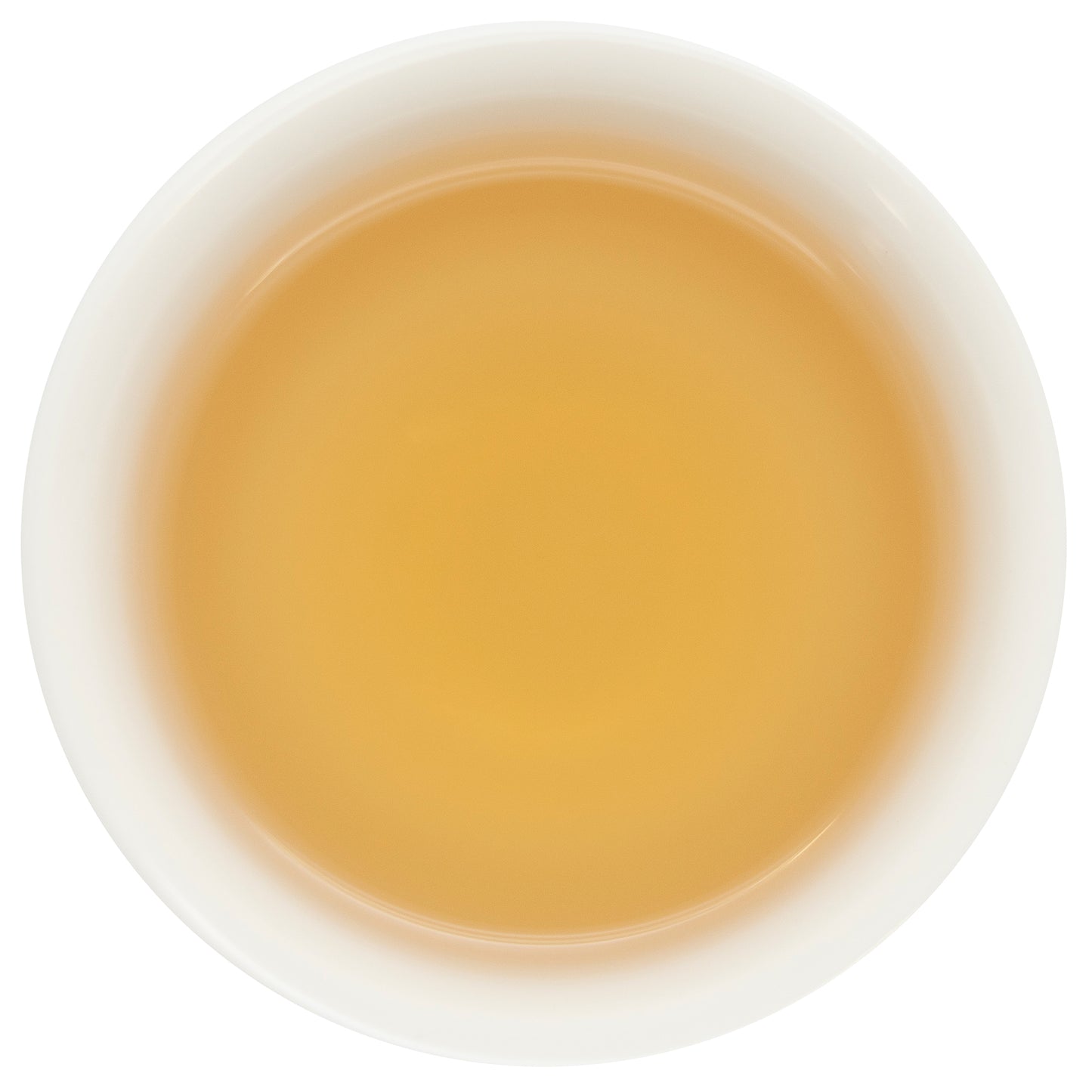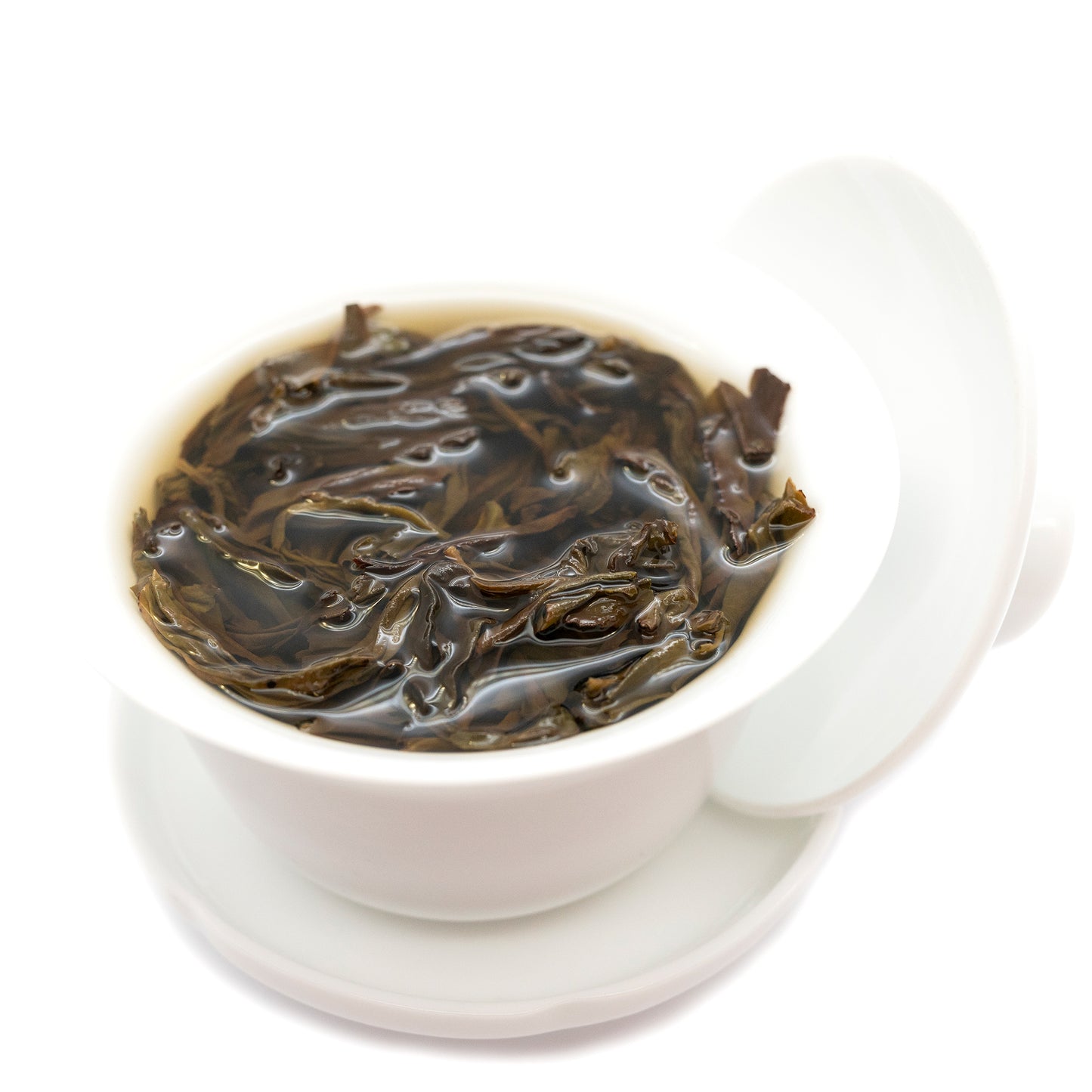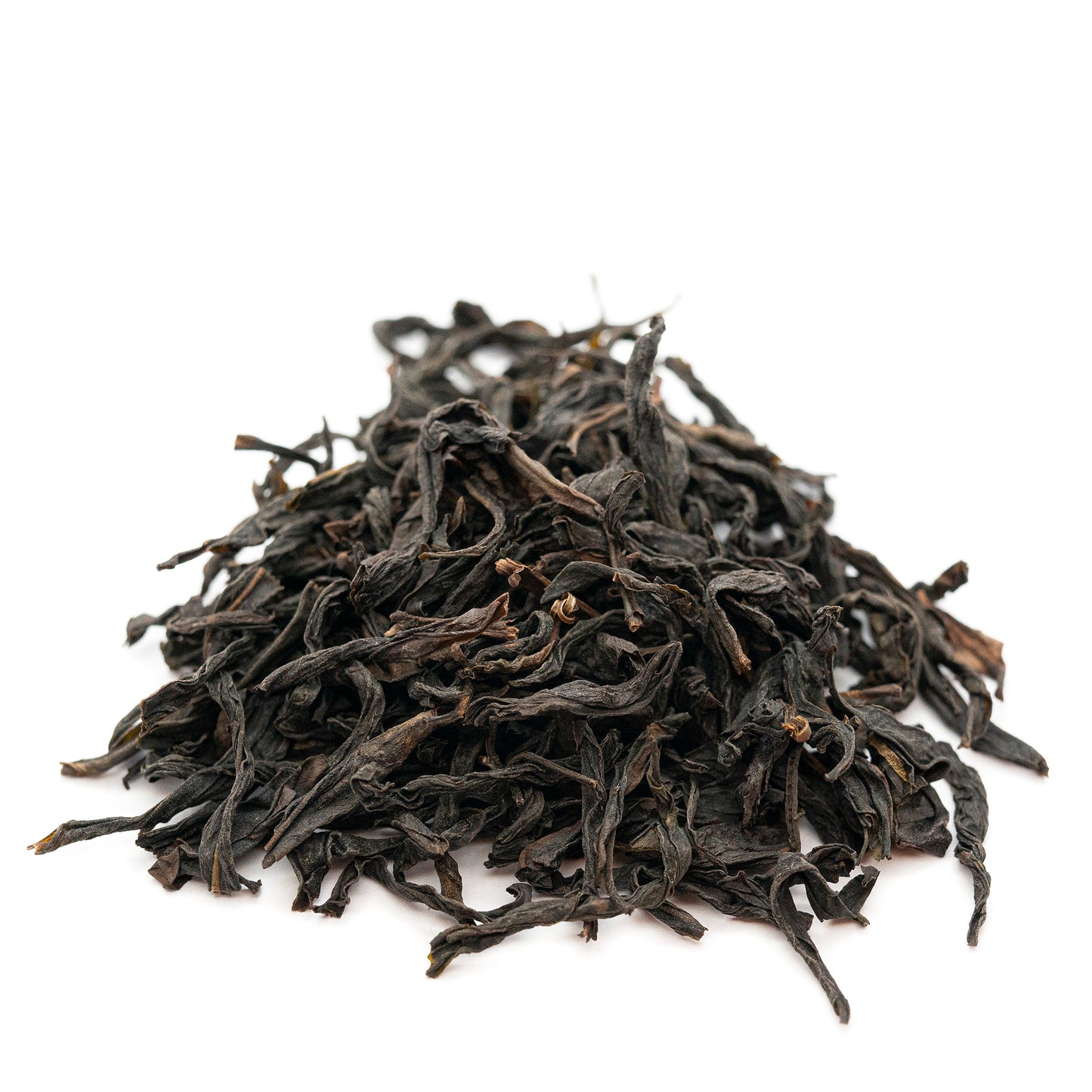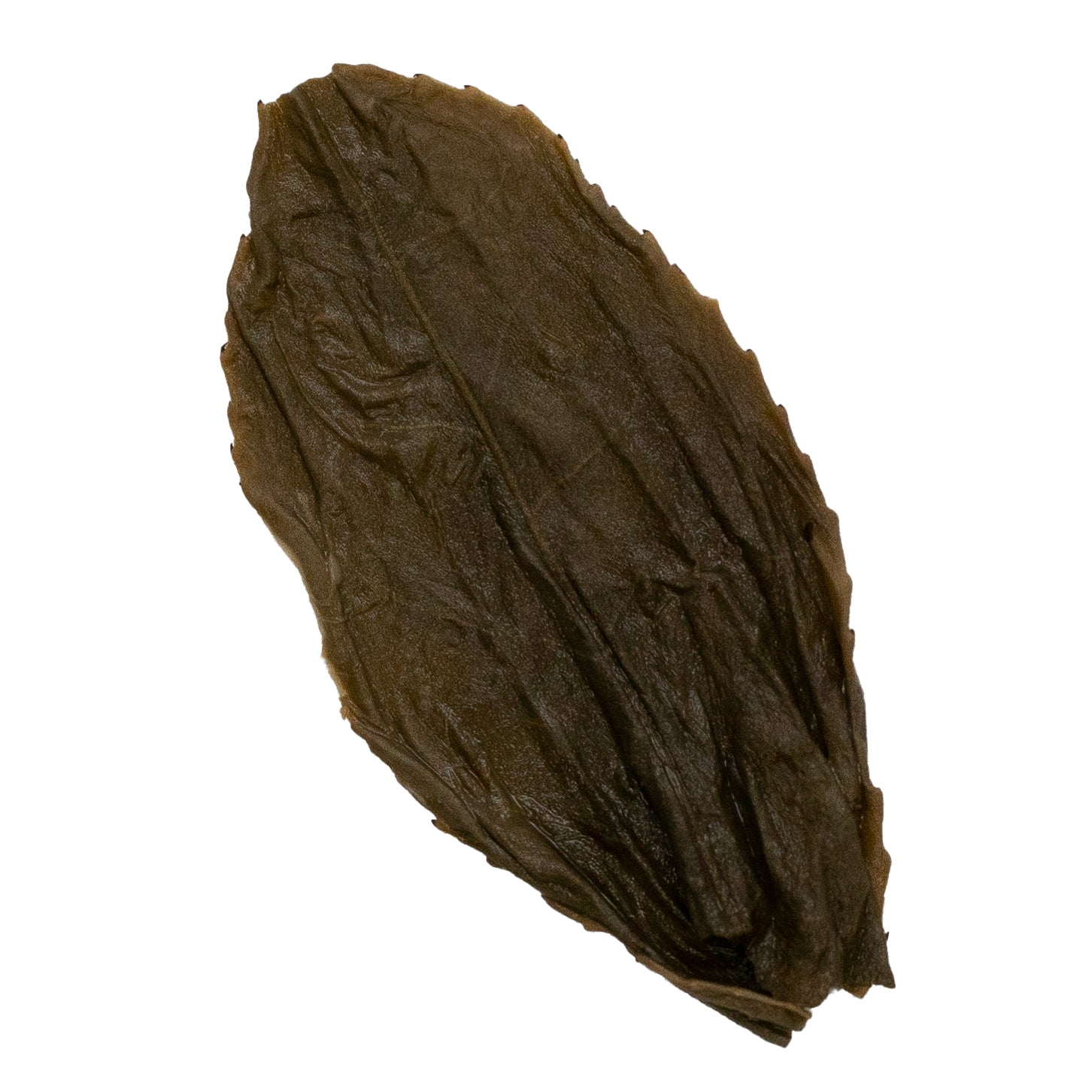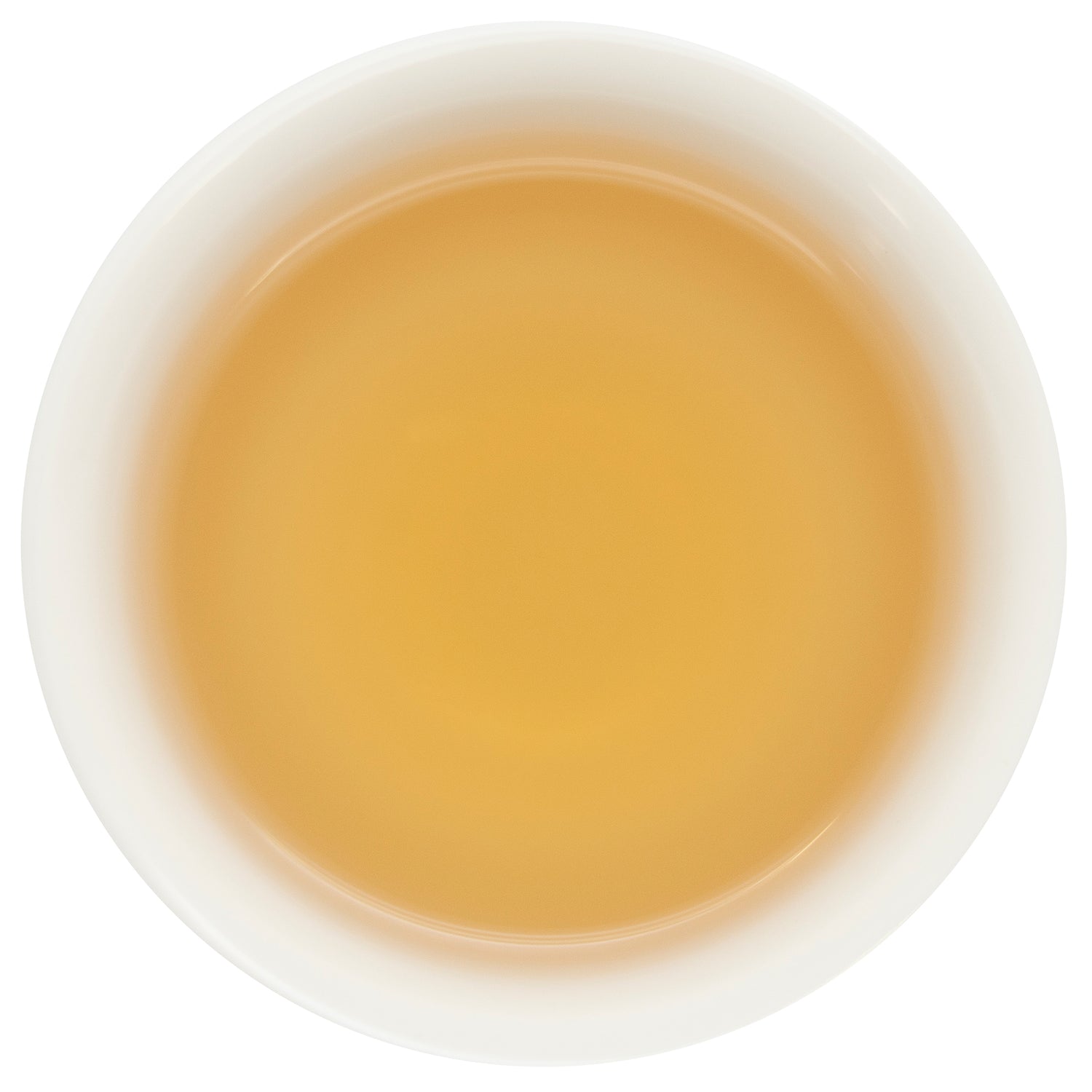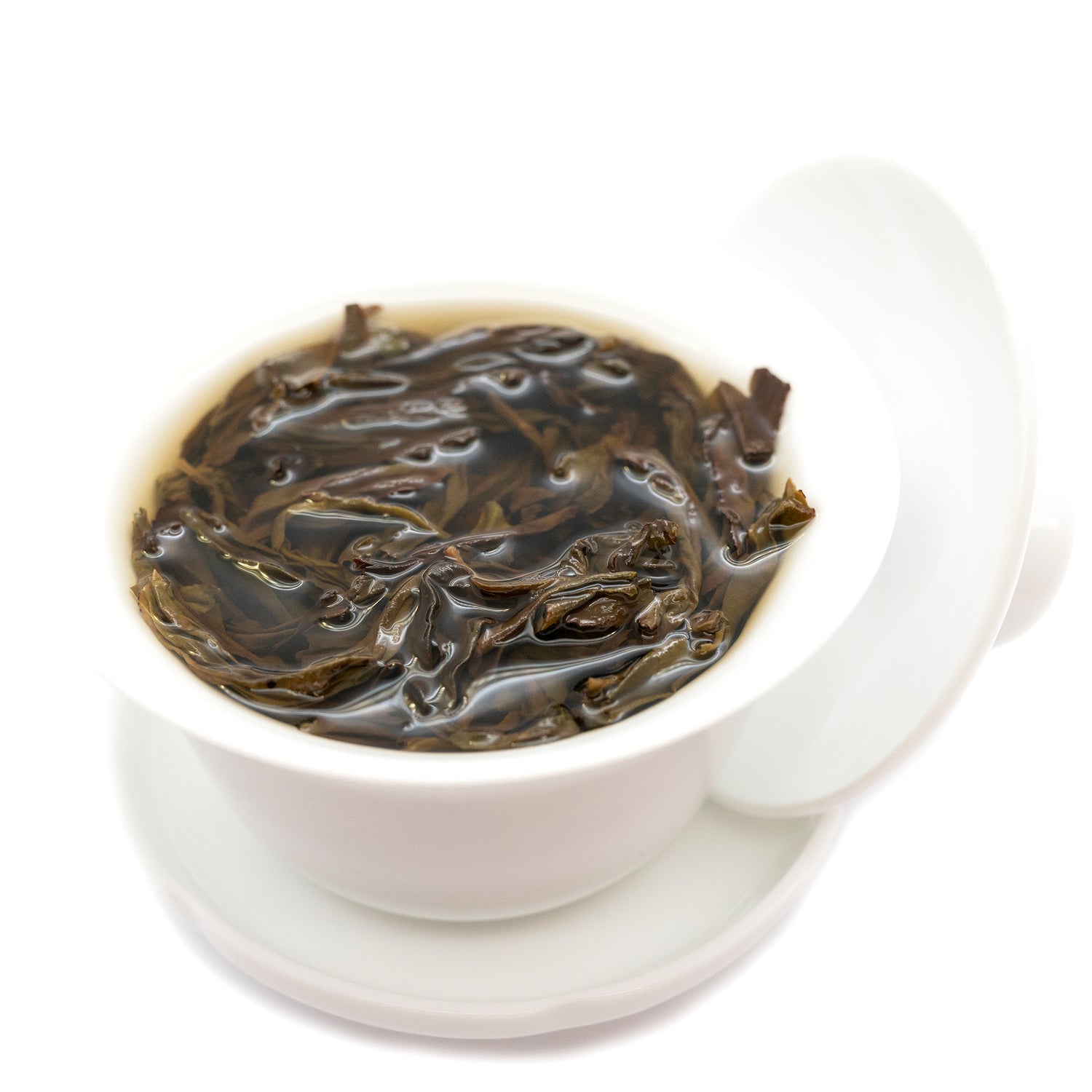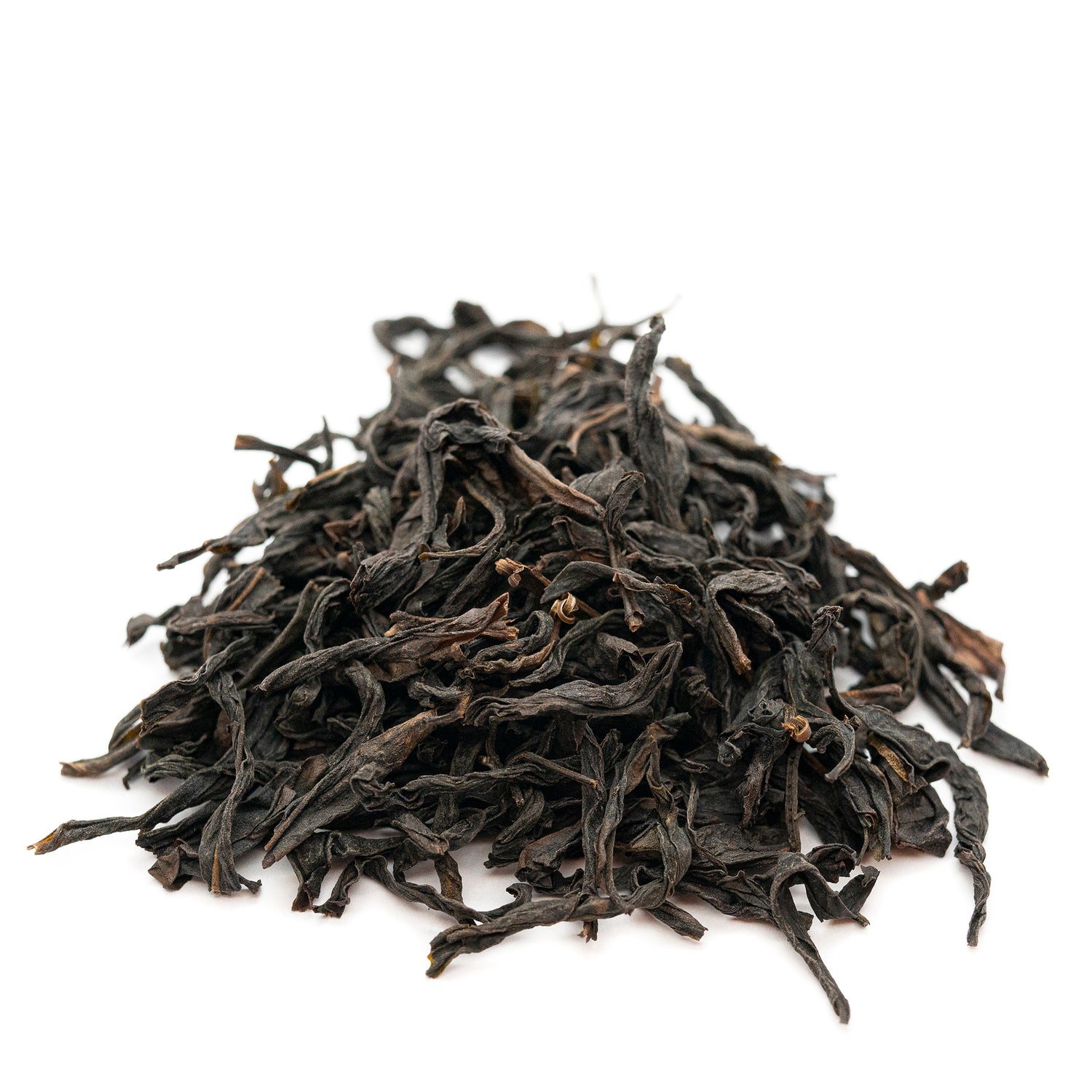Does a name make the tea or does the tea make the name? Ya Shi Xiang translates to Duck Shit. There are numerous stories of how the name came to be with the most known being a farmer in fear that somebody would steal his tea trees, decided to name his tea duck shit to make it less attractive. Unlike its name, Ya Shi Xiang is an elegant and aromatic varietal of Dan Cong. It has notes of tangerine and jasmine with a buttery mouthfeel.
With its increased popularity there is a lot of fake (non-Ya Shi Xiang varietal) or poorly made Ya Shi Xiang that are greener with an overall grassy note. Ya Shi Xiang leaves are large, dark, and meaty which means they demand a more mature fermentation and can take on higher roasts.
Ya Shi Xiang is an aromatic varietal with prominent grassy floral notes such as jasmine. What makes Ya Shi Xiang a prized varietal is its smooth body and buttery mouthfeel. A well-made Ya Shi Xiang should have a reasonable level of fruitiness among the floweriness and the liquor has a yellow color.
Dan Cong from very big trees are processed into Dan Zhu (single tree), which means that the entire batch comes from a single tree, and they are never blended; other teas, either old big trees or young trees, are picked and blended together before processing, which gives us single varietals, but not Dan Cong. Out of all Wu Long (Oolong) categories, Dan Cong picks the youngest leaves when the bud has just fully opened up or become frontal, called Xiao Kai Mian (small opening). The freshly picked leaves need to be sun wilted first. Once the leaves are silky and soft, they are moved inside to continue to wilt under shade and gently flipped occasionally. The shaking step is the signature step to making Wu Long (Oolong), where the tea maker really shows their skill by regulating how the water travels from the stems to the leaves and out. It is traditionally done by shaking the leaves on a bamboo tray, but now commonly done with a tumbling machine. This step varies by tea and by the weather; it takes a thoroughly experienced tea maker to decide how soon and often to shake the tea. This usually takes tea makers all night to complete. After the tea has rested for a few hours to ferment, the leaves are then transferred to a firing wok or machine to have all the residual enzymes killed early in the morning. The hot teas are then transferred to a rolling machine to be rolled into string shapes and then spread out evenly onto baking trays to be baked dry. After the tea season, the refining process of tea making starts with the tedious step of picking out old stems and leaves, usually taking months to finish. Then the “cleaned” teas are charcoal roasted over very dim ash fire for 6-10 hours. Many teas need to repeat this step, with at least three weeks' resting time in between each roasting.
